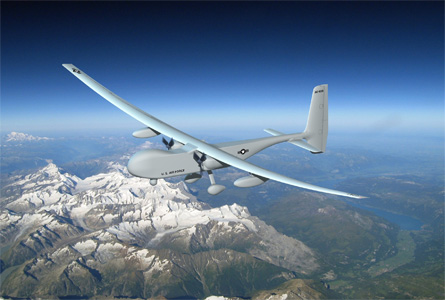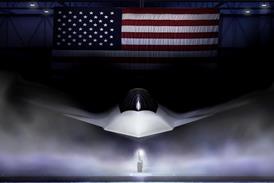Aurora Flight Sciences has claimed a victory over Lockheed Martin in the US Air Force Research Laboratory's (AFRL) medium-altitude global ISR and communications (Magic) joint capability technology demonstration (JCTD) contest.
Virginia-based Aurora will do most of the work on the project from its Columbus, Mississippi, facility under the $4.7 million contract win. The medium-altitude, extreme persistence aircraft, known as the Orion unmanned air system, is already under development at the site, says Bob Ashton, the company's director of ISR systems.
The company's vision for the future of intelligence, surveillance and reconnaissance is Orion - a conventionally fuelled aircraft that can spend five days at 20,000ft (6,100m) carrying a 453kg (1,000lb) payload.
 |
|---|
© Aurora Flight Sciences |
The AFRL's requirements for the Magic programme's aircraft are for it to remain airborne for up to 155h while carrying a 226kg payload at 15,000ft. The same aircraft also would be expected to carry a 1,130kg payload for up to 80h at the same altitude, it says.
Aurora says Orion is relatively low-risk for a demonstration project. Rather than the liquid hydrogen fuel route other experimental high-altitude, ultra-long endurance aircraft are following, its design is powered by the same Austro diesel engines used on Aurora's Centaur optionally piloted vehicle, based on the Diamond DA42.
Some of the airframe, and particularly the wing, is also based on work Aurora conducted for Boeing's Phantom Eye UAV.
Aurora began self-developing the Orion several years ago, after spending time working with US Air Force, US Army and other Pentagon stakeholders. "Nobody is satisfied with just an electro-optical/infrared ball anymore," Ashton notes.
Before the contract announcement, the company had hoped to make a first flight with the UAV in late October. However, this schedule is expected to be slowed slightly to enable the parties to evaluate payload options, concepts of operations and then grow and refine the requirements, Ashton says.
Large-scale JCTD programmes such as Magic generally have the goal of delivering a usable capability to the field in two to three years. Ashton says Orion will eventually require additional funding to meet that goal.
"Now we're in the game, working with the services and OSD [Office of the Secretary of Defense] to provide something they don't have right now," Ashton says. "Because they competed it, I think the programme will be better for it."
Lockheed declines to comment on the outcome of the Magic contest, until it has received briefings from the Pentagon later this month. The company's Skunk Works division had proposed a multipurpose, long-endurance design with a twin-boomed airframe and a high-aspect ratio wing.
Source: Flight International























